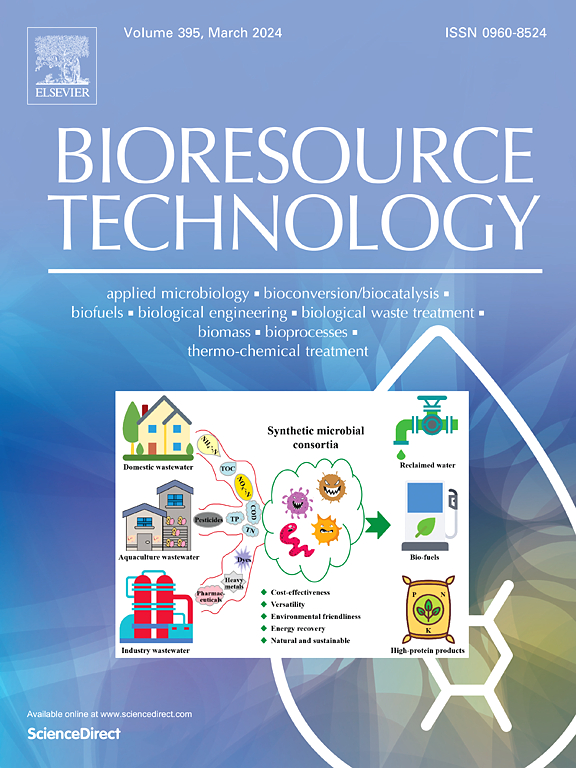集成碱基编辑和微流体促进木质素微生物脂质生产。
IF 9
1区 环境科学与生态学
Q1 AGRICULTURAL ENGINEERING
引用次数: 0
摘要
木质素是一种顽固性芳香生物聚合物,是一种很有前途的可持续增值原料。在此,我们研究了曲霉J1对碱木质素(AL)的转录反应,并建立了Cu2+诱导的MCM5-AID碱基编辑器,用于全基因组C-to-T/G-to-A突变。转录组学揭示了al诱导的电子传递、脂质分解代谢和铁稳态的上调。液滴微流体技术实现了超高通量筛选,鉴定出具有优越性状的M6突变体。M6在摇瓶中获得了49 %的干细胞重量(DCW)(增加36 %)和228.58 U/L的漆酶活性(增加75 %),在生物反应器中进一步验证了51 %的DCW脂质(增加33 %)和240.43 U/L的漆酶活性(增加87 %)。基因组测序证实了随机的C-to-T突变,而转录组学表明脂肪酸、类固醇和甘油脂的生物合成增强,将碳通量重定向到富含油的单细胞蛋白。这项工作为木质素生物转化提供了一个完整的框架,并突出了合成生物学-微流体集成在精确真菌工程中的潜力。本文章由计算机程序翻译,如有差异,请以英文原文为准。
Integrated base editing and microfluidics boost microbial lipid production from lignin
Lignin, a recalcitrant aromatic biopolymer, is a promising feedstock for sustainable valorization. Here, we investigated the transcriptional response of Curvularia clavata J1 to alkali lignin (AL) and established a Cu2+-inducible MCM5-AID base editor for genome-wide C-to-T/G-to-A mutagenesis. Transcriptomics revealed AL-induced upregulation of electron transport, lipid catabolism, and iron homeostasis. Droplet microfluidics enabled ultrahigh-throughput screening, identifying mutant M6 with superior traits. M6 achieved 49 % lipid of dry cell weight (DCW) (36 % increase) and 228.58 U/L laccase activity (75 % increase) in shake flasks, further validated in bioreactors with 51 % DCW lipid (33 % increase) and 240.43 U/L laccase activity (87 % increase). Genome sequencing confirmed random C-to-T mutations, while transcriptomics indicated enhanced fatty acid, steroid, and glycerolipid biosynthesis redirecting carbon flux to oil-enriched single-cell protein. This work provides an integrated framework for lignin biotransformation and highlights the potential of synthetic biology-microfluidics integration for precise fungal engineering.
求助全文
通过发布文献求助,成功后即可免费获取论文全文。
去求助
来源期刊

Bioresource Technology
工程技术-能源与燃料
CiteScore
20.80
自引率
19.30%
发文量
2013
审稿时长
12 days
期刊介绍:
Bioresource Technology publishes original articles, review articles, case studies, and short communications covering the fundamentals, applications, and management of bioresource technology. The journal seeks to advance and disseminate knowledge across various areas related to biomass, biological waste treatment, bioenergy, biotransformations, bioresource systems analysis, and associated conversion or production technologies.
Topics include:
• Biofuels: liquid and gaseous biofuels production, modeling and economics
• Bioprocesses and bioproducts: biocatalysis and fermentations
• Biomass and feedstocks utilization: bioconversion of agro-industrial residues
• Environmental protection: biological waste treatment
• Thermochemical conversion of biomass: combustion, pyrolysis, gasification, catalysis.
 求助内容:
求助内容: 应助结果提醒方式:
应助结果提醒方式:


